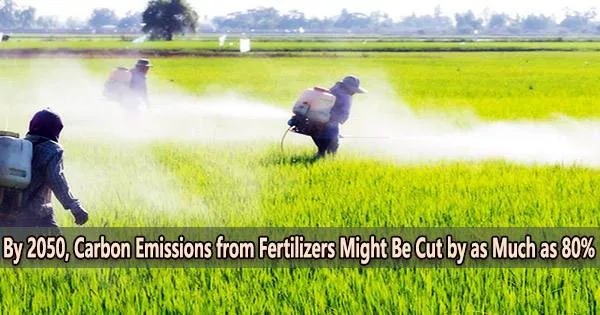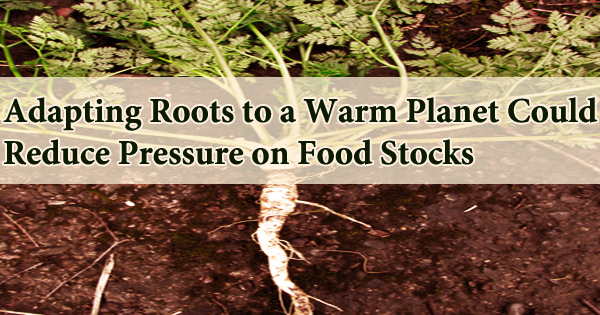The production and use of fertilizers can contribute to carbon emissions in several ways. One major source of emissions is the production of nitrogen fertilizers, which are typically made from natural gas. The process of synthesizing ammonia from natural gas requires high temperatures and pressures, which can lead to significant greenhouse gas emissions.
Throughout the first time, researchers have correctly evaluated the carbon footprint for the whole life cycle of fertilizers, which account for around 5% of global greenhouse gas emissions. They discovered that by 2050, carbon emissions may be cut to one-fifth of their current levels.
The researchers, from the University of Cambridge, found that two thirds of emissions from fertilizers take place after they are spread on fields, with one third of emissions coming from production processes.
The whole contribution of nitrogen-based fertilizers, from production to application, has never been properly assessed, despite the fact that they are already well known to be a significant source of greenhouse gas emissions. Their analysis found that manure and synthetic fertilizers emit the equivalent of 2.6 gigatonnes of carbon per year more than global aviation and shipping combined.
The urgent need to reduce fertilizer-related carbon emissions must be weighed against the requirement for global food security. According to earlier studies, 48% of the world’s population is fed by crops grown using synthetic fertilizers, and until 2050, the population is projected to increase by 20%.
According to the Cambridge researchers, in order to minimize fertilizer emissions while preserving food security, a combination of scalable technology and regulatory solutions is required.
Our work gives us a good idea of what’s technically possible, what’s big, and where interventions would be meaningful it’s important that we aim interventions at what matters the most, in order to make fast and meaningful progress in reducing emissions.
Dr. André Cabrera Serrenho
The emissions from manure and synthetic fertilizers might, however, be cut by up to 80%, to one-fifth of current levels, without a loss in productivity, according to their estimates, if such solutions could be applied at scale. Their results are reported in the journal Nature Food.
“Incredibly, we don’t actually know how many chemicals we produce globally, where they end up, where and how they accumulate, how many emissions they produce, and how much waste they generate,” said co-author Dr. André Cabrera Serrenho from Cambridge’s Department of Engineering.
Serrenho and his co-author Yunhu Gao undertook a project to accurately measure the total impacts of fertilizers, one of the two main products of the petrochemical industry. Of all the products made by the petrochemical industry, the vast majority as much as 74% are either plastics or fertilizers.
“In order to reduce emissions, it’s important for us to identify and prioritise any interventions we can make to make fertilizers less harmful to the environment,” said Serrenho. “But if we’re going to do that, we first need to have a clear picture of the whole lifecycle of these products. It sounds obvious, but we actually know very little about these things.”
By combining the production and consumption of nitrogen fertilizers with regional emission factors across nine globe regions, the researchers were able to map the global flows of manure and synthetic fertilizers as well as their emissions for 2019 along all phases of the lifecycle.
After conducting their examination, the researchers discovered that, in contrast to many other products, the majority of fertilizer emissions happen during consumption rather than during production.
“It was surprising that this was the major source of emissions,” said Serrenho. “But only after quantifying all emissions, at every point of the lifecycle, can we then start looking at different mitigation methods to reduce emissions without a loss of productivity.”
Researchers compiled and calculated the maximum theoretical impact of various mitigation strategies. Although the majority of these are already known, their full potential impact has not yet been determined.
Ammonia synthesis accounts for the majority of emissions from the manufacture of synthetic fertilizers, which are also a result of some of the chemical processes involved. The industry’s decarbonization of heating and hydrogen production would be the most efficient mitigation at the production stage.
In addition, fertilizers might contain substances known as nitrification inhibitors, which stop bacteria from generating nitrous oxide. However, these chemicals are likely to make fertilizers more expensive.
“If we’re going to make fertilizers more expensive, then there needs to be some sort of financial incentive to farmers and to fertilizer companies,” said Serrenho. “Farming is an incredibly tough business as it is, and farmers aren’t currently rewarded for producing lower emissions.”
The single most effective way to reduce fertilizer-associated emissions, however, would be to reduce the amount of fertilizers that we use.
“We’re incredibly inefficient in our use of fertilizers,” said Serrenho. “We’re using far more than we need, which is economically inefficient and that’s down to farming practices. If we used fertilizer more efficiently, we would need substantially less fertilizer, which would reduce emissions without affecting crop productivity.”
The researchers also examined the mix of fertilizers used around the world, which differs by region. According to the researchers, switching from some of the fertilizers that produce the most emissions, such urea, to ammonium nitrate could further lower emissions by 20% to 30%. However, this would only be beneficial after decarbonising the fertilizer industry.
“There are no perfect solutions,” said Serrenho. “We need to rethink how we produce food, and what sorts of economic incentives work best. Perhaps that means paying farmers to produce fewer emissions, perhaps that means paying more for food. We need to find the right mix of financial, technological and policy solutions to reduce emissions while keeping the world fed.”
Serrenho and Gao estimate that by implementing all the mitigations they analyzed, emissions from the fertilizer sector could be reduced by as much as 80% by 2050.
“Our work gives us a good idea of what’s technically possible, what’s big, and where interventions would be meaningful it’s important that we aim interventions at what matters the most, in order to make fast and meaningful progress in reducing emissions,” said Serrenho.
The research was part of the C-THRU project, led by Professor Jonathan Cullen, where researchers from four UK and US Universities are working to bring clarity to the emissions from the global petrochemical supply chain.
















